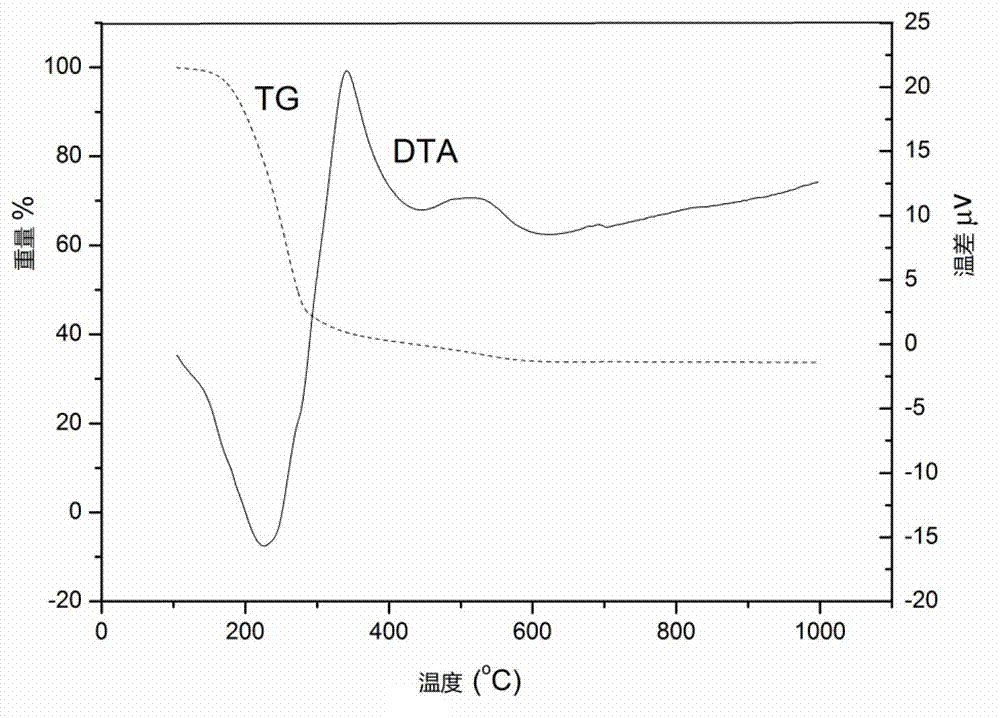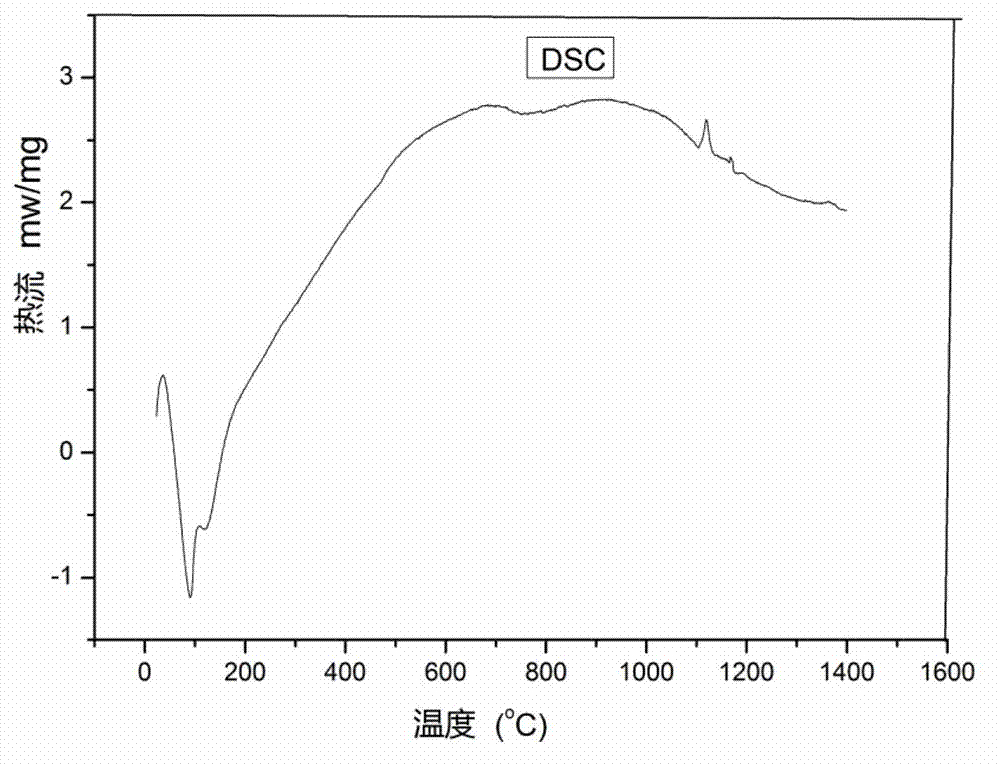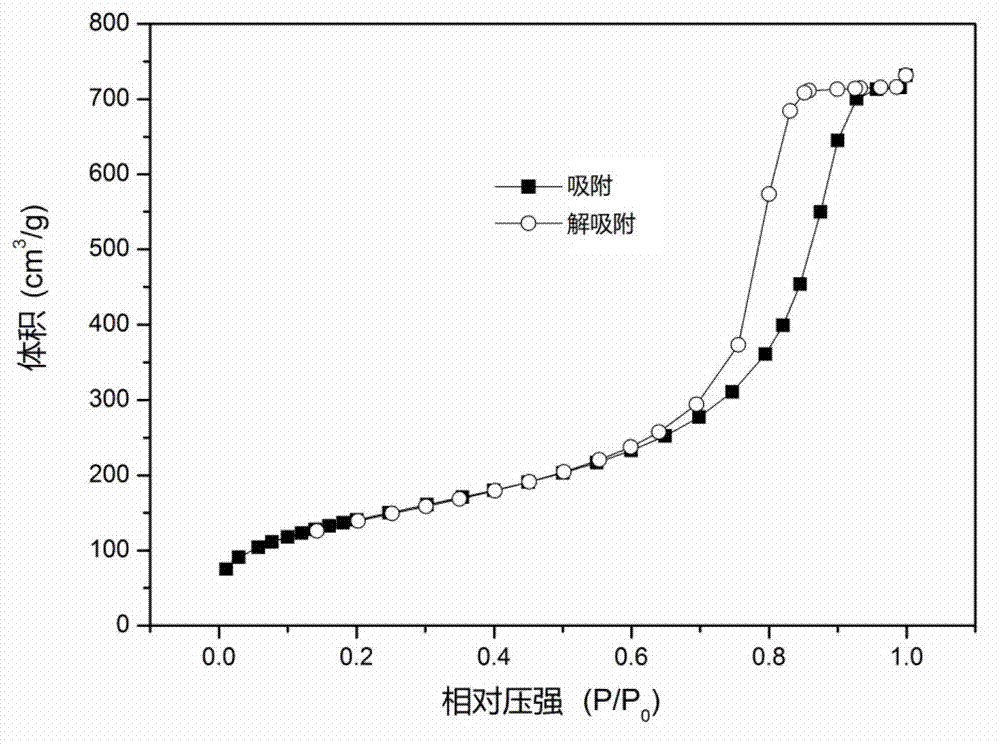High-specific-surface-area mesoporous aluminum gallium phosphate glass and preparation method thereof
A high specific surface area, phosphate glass technology, applied in the field of glass, can solve problems such as limiting optical applications, and achieve high stability, high glass transition temperature, and high specific surface area.
- Summary
- Abstract
- Description
- Claims
- Application Information
AI Technical Summary
Problems solved by technology
Method used
Image
Examples
Embodiment 1
[0026] A total of 0.004mol of aluminum lactate 98at% and gallium nitrate 2at% were added to 16ml of deionized water, respectively, and 0.004mol of orthophosphoric acid solution was added under stirring with a magnetic stirrer. Then adjust pH=2.40 with 0.50mol / L dilute ammonia water, and then use a magnetic stirrer to stir for 2 hours. The stirred solution was transferred to a watch glass, left to stand at room temperature for 1 day, and then transferred to a 50°C oven to dry for 2 weeks. The dried samples were placed in a corundum crucible for heat treatment in a muffle furnace, heated from room temperature to 600°C, and kept at 600°C for 6 hours to obtain colorless and transparent mesoporous alumino-gallium phosphate glass. Using the Brunauer-Emmett-Teller (hereinafter referred to as BET) specific surface area measuring instrument to analyze the specific surface area of the sample is 515m 2 / g, the average pore size of mesopores is 8.59 nm.
Embodiment 2
[0028] Add 0.004mol of aluminum lactate 95at% and gallium nitrate 5at% to 24ml of deionized water, respectively, and add 0.004mol of orthophosphoric acid solution under stirring with a magnetic stirrer. Then adjust pH=2.8 with 1.0mol / L dilute ammonia water, and then use a magnetic stirrer to stir for 4 hours. The stirred solution was transferred to a watch glass, allowed to stand at room temperature for 2 days, and then transferred to a 70°C oven to dry for 4 days. The dried sample is placed in a muffle furnace for heat treatment in a corundum crucible, heated from room temperature to 650°C, and kept at 650°C for 8 hours to obtain a colorless and transparent mesoporous aluminum gallium phosphate glass. Using BET specific surface area measuring instrument to analyze its components, the specific surface area of the sample is 388m 2 / g, the average pore size of mesopores is 8.29 nm.
Embodiment 3
[0030] A total of 0.004mol of aluminum lactate 90at% and gallium nitrate 10at% was added to 32ml of deionized water, respectively, and 0.004mol of orthophosphoric acid solution was added under stirring with a magnetic stirrer. Then adjust pH=3.0 with 1.5mol / L dilute ammonia water, and then use a magnetic stirrer to stir for 8 hours. The stirred solution was transferred to a watch glass, allowed to stand at room temperature for 4 days, and then transferred to an 85°C oven to dry for 1 week. The dried samples are placed in a corundum crucible for heat treatment in a muffle furnace, heated from room temperature to 700°C, and kept at 700°C for 10 hours to obtain colorless and transparent mesoporous alumino-gallium phosphate glass. Analysis of 0.1Ga-0.9Al-PO with BET Surface Area Measurement Instrument 4 The specific surface area of the component sample is 343m 2 / g, the average pore size of mesopores is 8.24 nm.
PUM
| Property | Measurement | Unit |
|---|---|---|
| Specific surface area | aaaaa | aaaaa |
| Mesopore average pore size | aaaaa | aaaaa |
| Specific surface area | aaaaa | aaaaa |
Abstract
Description
Claims
Application Information
 Login to View More
Login to View More - R&D
- Intellectual Property
- Life Sciences
- Materials
- Tech Scout
- Unparalleled Data Quality
- Higher Quality Content
- 60% Fewer Hallucinations
Browse by: Latest US Patents, China's latest patents, Technical Efficacy Thesaurus, Application Domain, Technology Topic, Popular Technical Reports.
© 2025 PatSnap. All rights reserved.Legal|Privacy policy|Modern Slavery Act Transparency Statement|Sitemap|About US| Contact US: help@patsnap.com



